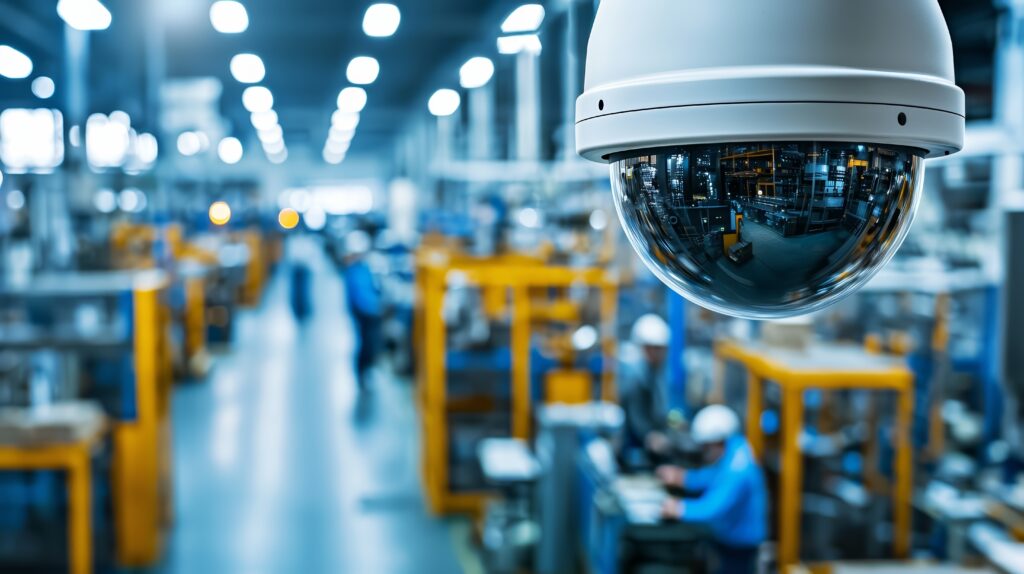
Implementing proactive surveillance solutions: A key strategy for industrial operations and critical infrastructure
By Joe Morgan

Credit: Adobe Stock/suratin.
Industrial operations and critical infrastructure are vital cogs that keep the machinery of society and the economy in motion. As pivotal elements in the economic chain, they must always ensure business continuity. Yet, these sectors are prone to workplace accidents that jeopardize employees’ safety and interrupt smooth operations. Considering these challenges, an urgent need arises for systems that can manage workers’ whereabouts effectively, ensuring they are in the right place at the right time. Such systems serve the dual purpose of promoting employee well-being and facilitating the uninterrupted functioning of the business.
While it is nearly impossible to eliminate accident risks entirely, it is definitely within reach to minimize these risks considerably. One approach to this is through implementing intelligent, cost-effective surveillance solutions. These solutions enhance the safety of the working environment, thereby bolstering business continuity by reducing downtime.
The journey towards safer workplaces does not need to be arduous. Choosing surveillance technologies that utilize open platforms makes it easier to integrate novel camera systems with existing infrastructures. This integration gives your prior investments an extended lease on life and enhances site safety. This enhancement manifests in improved real-time awareness of on-site risks, swift response capabilities, and better safety protocols to prevent accidents in the long run.
Responding to real-time incidents
Traditional fire and smoke alarms have long been the mainstay of basic workplace safety. However, to enhance safety levels in industrial workplaces, these systems must be complemented with solutions offering broader situational awareness. This is where on-site surveillance steps in. It provides coverage that is broader in scope and more accurate than in-person observations. Be it a thermal camera detecting a sudden change in temperature as an indication of a gas leak or a camera equipped with analytics that can identify smoke for early fire prevention, such technology can pre-emptively alert you to potential risks.
Integration of these cameras with existing industrial control and response mechanisms offers real-time support. For instance, if the surveillance system detects a worker falling over, it can instantly send an alert to provide immediate help.
Besides network cameras offering visual cues about potential risks, network audio solutions also play a crucial role in workplace safety. These audio systems enable you to directly communicate with employees on-site in case an evacuation or other safety measures are needed. Combined surveillance solutions allow you to prevent accidents and ensure quick assistance when necessary.
An essential aspect of these solutions is intelligent analytics, which makes it possible to automate various safety functions. You can set the parameters to suit the needs of your operations, thereby reducing the risk of false alarms. These connected surveillance solutions have become vital for businesses in terms of risk mitigation and prompt response during emergencies.
Preventing accidents in the near future
Connected cameras, network audio, and intelligent analytics, when integrated into a seamless system, can help prevent avoidable accidents on-site. These solutions can detect unsafe behaviour, enabling you to take necessary action to avert accidents. For instance, AI-powered solutions can be customized to identify the absence of personal protective equipment (PPE), such as hard hats, and alert the worker to put on the required safety gear. Similarly, these solutions can keep high-risk areas clear and send an alert if a worker approaches a restricted zone.
This proactive approach to preventing accidents is a vital safety net that comes into play even if employees forget to follow safety measures. As an employer, you can have peace of mind knowing you’re doing your utmost to keep workers safe. These safety measures also result in additional benefits such as fewer claims, reduced liability, and less unnecessary downtime caused by accidents and subsequent investigations.
Respecting and protecting workers’ privacy is crucial when implementing these surveillance measures. Surveillance can be deployed using dynamic masking or blurring of individuals or their faces, ensuring workers’ privacy while simultaneously ensuring their safety.
Analyzing risks to improve safety policies
Surveillance solutions are not only limited to real-time risk management and accident prevention, but they also provide valuable insights to improve safety policies in the long run. These insights come from a detailed analysis of workplace incidents, injuries, and near misses.
Both network cameras and other sensors, such as body-worn cameras, can provide unbiased footage, supporting the continual improvement of safety policies. These surveillance solutions complement the existing health and safety monitoring measures in critical infrastructure and industrial operations. You can assure workforce safety and long-term business continuity by leveraging technology to enhance health and safety practices.
An open approach to ensuring employee safety and business continuity
Operating in a high-risk environment can be stressful for workers. Ensuring checks and balances are in place reassures them that their safety is a priority. Innovative, open surveillance technology can help detect and address early indicators of safety risks.
Despite the presence of legacy surveillance systems, critical infrastructure and industrial operations sites are rarely optimized for proactive on-site safety. By incorporating surveillance solutions that operate on an open platform and can leverage existing network camera investments, businesses can respond swiftly to real-time incidents, prevent avoidable accidents, and enhance safety protocols for the future. This approach safeguards your workers and your bottom line by reducing the risk of claims and downtime.
Joe Morgan is the segment development manager, critical infrastructure for Axis Communications.
Print this page